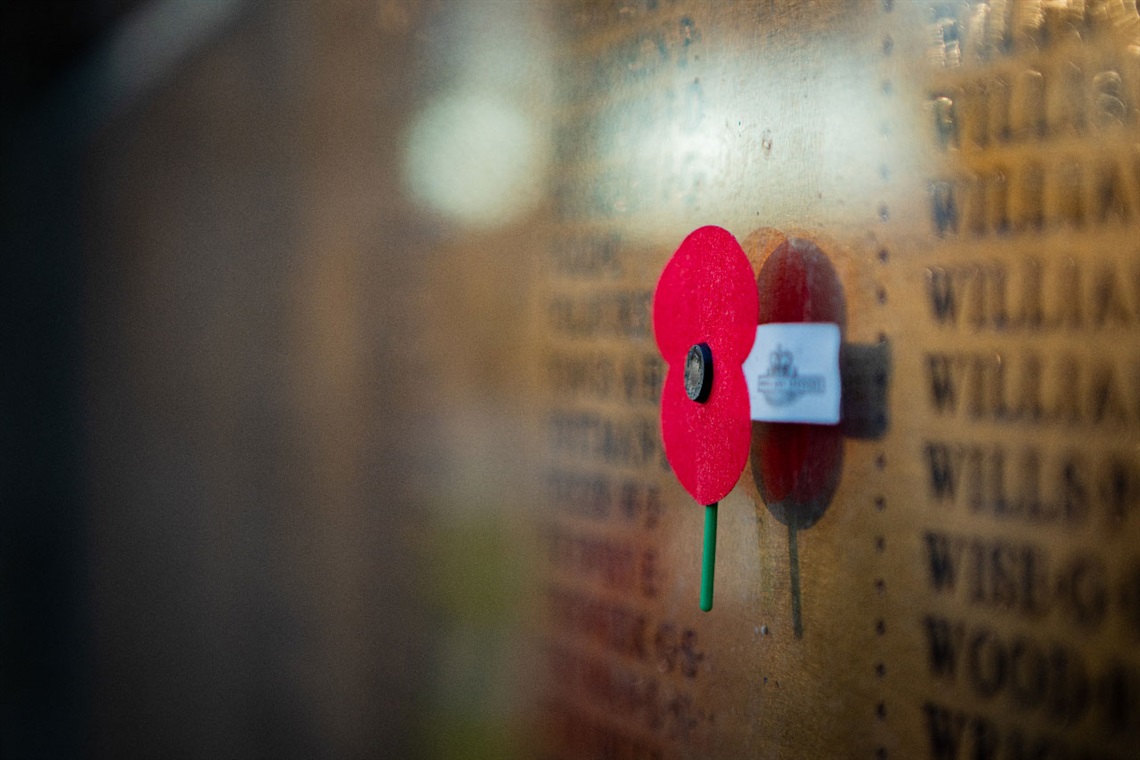Poppy Places recognises seven more sites in Palmerston North
Published on 16 November 2023

Another seven Palmerston North streets have had the red poppy added to their street signs.
The addition of the poppies is part of the Places of Remembrance project run by the New Zealand Poppy Places Trust. The trust has identified places in New Zealand that have a link to our military involvement in a conflict or operational service overseas. Twenty-nine streets in Linton Military Camp and thirty-one streets in Palmerston North had already been recognised as a Poppy Place.
The following seven 'sites of significance' in Linton Military Camp have now been named as Poppy Places. They were announced at a ceremony following the Remembrance Day service on Saturday 11 November.
Andrew Murray Drive
Andrew Murray Drive is named after Lieutenant Colonel Andrew Murray of the Corps of Royal New Zealand Engineers (RNZE). In World War II he served in the South Pacific and was appointed an Officer of the Order of the British Empire in recognition of his distinguished service.
Florence Drive
Many New Zealanders fought and died at the Battle for Florence during World War II. This battle saw the attack on the Pian dei Cerri and La Poggiona ridges, with opposition being tenacious. The combined efforts eventually forced the enemy to withdraw, deciding the fate of Florence.
Hanson Road
During World War II, Hanson served with the 2nd New Zealand Division first as the Officer Commanding 7 Field Company, eventually becoming Commander Royal Engineers (CRE) of the New Zealand Engineers of the NZEF and served in Greece, Crete, North Africa and Italy. He received official recognition for his efforts in the war, receiving the Distinguished Service Order and bar and was appointed an Officer of the Order of the British Empire.
Treasury Place
The Battle of the Treasury Islands took place in World War II on the Treasury Islands group, part of the Solomon Islands. The battle formed part of the wider Pacific War and involved New Zealand and US forces fighting against Japanese troops. The majority of the ground forces were provided by the New Zealand 3rd Division.
The Allied invasion of the Japanese-held island group intended to secure Mono and Stirling Islands so that a radar station could be constructed on the former and the latter be used as a staging area for an assault on Bougainville. The attack on the Treasury Islands would serve the long-term Allied strategy of isolating Bougainville and Rabaul and the elimination of the Japanese garrison in the area.
Trieste Street
In 1945, New Zealand troops forced the surrender of 2000 German Army Troops holding out in Trieste, in Northern Italy. New Zealand and Yugoslav troops occupied the area until British troops arrived.
Williams Drive
Major General Williams served with the 1st Battalion Fiji Infantry Regiment and later with the 2nd Battalion New Zealand Regiment (2 NZ Regt) during the Malayan Emergency based in Taiping, Malaya. He moved up the ranks and became Assistant Chief of Defence Staff at HQ NZDF from 1979 to 1980 and Deputy Chief of the General Staff in 1981. When he retired from the Army in 1984, he was Chief of General Staff.
Woodlands Street
In the 1930s, Woodlands Camp in the north of Singapore was created to support the British naval operations. And from 1970s onwards, Woodlands provided many unit lines and accommodation for accompanied personnel of New Zealand Force South-East Asia (NZFORSEA) until the disbandment of the force and return of personnel to New Zealand.